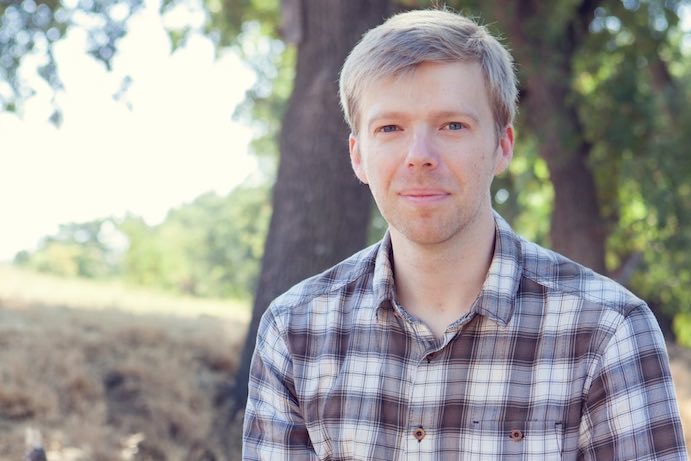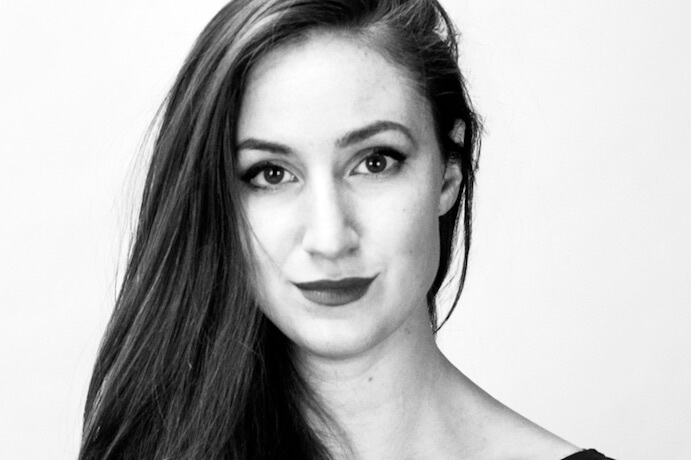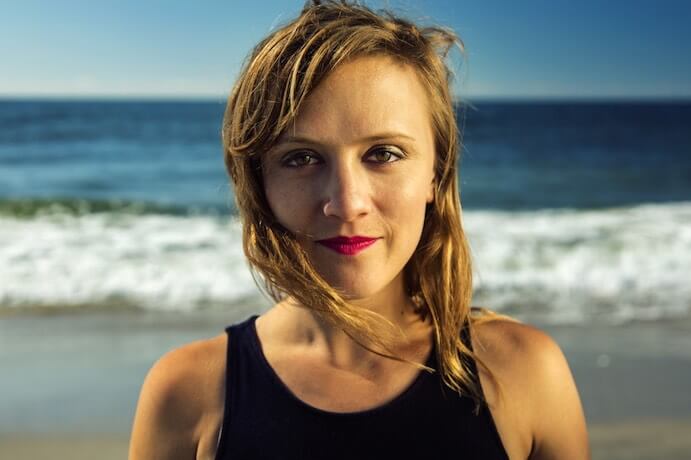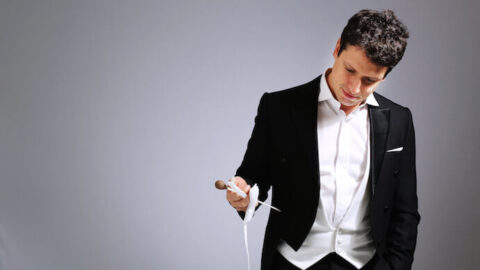America’s “most important” orchestra may technically be turning 99 this month –– they performed their first concert in October of 1919 –– but the Los Angeles Philharmonic has much to celebrate (and an ample budget), so no one is blaming them for kicking off their 100th birthday party early.
And oh, what a party. In late September, the orchestra launched its centennial season with a day-long outdoor extravaganza, transforming seven miles of city streets between Walt Disney Concert Hall and the Hollywood Bowl from congested, traffic-filled roadways into bike, pedestrian, and Dudamel-shaped puppet-friendly boulevards. Some 1,800 performers accompanied thousands of pedaling, scooting, and otherwise carless Angelenos along the palm tree-lined streets. At the end of the journey, Katy Perry, Herbie Hancock, and John Williams joined the orchestra as fireworks lit up L.A.’s most iconic outdoor venue like a birthday cake under the starry Hollywood sky.
After the outdoor festivities, Dudamel and his band got down to business inside Disney Hall. In recent years, the LA Phil programmed successful mini-festivals celebrating the music of international cities like Reykjavik and Mexico City. To open this season, they focused on home turf. Simply titled “LA Fest,” the first two weeks of the 2018/2019 LA Phil season gave the orchestra ample opportunity to flex its virtuosic muscles. From October 2 to October 14, the orchestra presented ten concerts featuring seven unique programs and the world premieres of ten of the fifty works they commissioned in celebration of their centennial season.
“LA Fest: LA’s Newest Music” was performed just once on October 9. Curated by Andrew Norman–the director of the LA Phil’s Barry and Nancy Sanders Composer Fellowship Program and an integral figure in L.A.’s new music scene–it featured five 10-15 minute world premieres, all by composers in their 20s and 30s.

Ethan Braun’s The Lost Ones was a rowdy intro. Pairing a busy, blurting and quacking live brass quintet with an onslaught of cacophonous pre-recorded sounds, it mimics the incessant, noisy rush of the digital information age. The quintet was constantly (and purposefully) overwhelmed by distorted feedback flowing from bulky onstage speakers. Like Tweets quipping and shouting for attention amidst a torrential, never-ending newsfeed, they struggled to get their message across.
The two pieces that followed were more subtle. During Tina Tallon’s exquisitely crafted …for we who keep our lives in our throats… conductor Paolo Bortolameolli calmly outlined a slow, steady 4/4 beat while a small, amplified, and live electronically-mixed ensemble (flute, harp, violin, viola and cello) scraped, scratched, and picked its way through a haunting, hushed score.
Tallon, a doctoral student at the University of California, San Diego, is interested in the effects of trauma on the human psyche. Much like the memory of a traumatic experience, her music is muted but precise, distorted and specific. During this piece, the violin and violist at times exchange their instruments for blocks of chunky white styrofoam. Cradling the styrofoam like expensive instruments, they bowed virtuosically to eerily beautiful and chilling effect.

Daniel Allas’ to be tender followed. Beginning and ending with nearly inaudible percussive rumbles, it incorporates long sustained tones that evoke a meditative mood. Together, these three pieces offered a musical snapshot of current American social and political realities; the exhausting daily barrage of news and information that floods screens and brains, the private scars from personal traumas fueled by rape culture and gun violence, and the meditative spaces we seek to escape from it all.
After intermission, a welcome balm to this heady intro came in the form of Natacha Diels’ Laughing to Forget, which utilizes unexpected physicality and verbalizations from string, brass, woodwind, and percussion players. Wittingly choreographed and smartly executed, Diels’ work struck a balance between light-hearted charm and musical complexity.
Gustavo Dudamel lead the final piece on the program–Carolyn Chen’s delicate, impressionistic The Sleeper and the Drinker. A small, fluttering flute concerto, it brings to vivid life a passage from Rebecca Solnit’s The Faraway Nearby, which depicts moths drinking the tears of sleeping birds.
Outside the concert hall, a sixth world premiere: Ellen Reid’s eight minute long Oscillations: One Hundred Years and Forever looped in Disney’s outdoor Keck Amphitheatre prior to the concert and during intermission. An intricate and lush choral arrangement based on a libretto by Sarah LaBrie, the chorus was sparsely and effectively accompanied by solo percussionist and abstract projections by artists Keith Skretch and Hana S. Kim.

Also in the lobby before the concert was one of Christopher Rountree’s contributions to the LA Phil’s season-long “Fluxus Festival.” More performance art than composition, the piece asked everyone who entered the hall to consider the ambient noises around them. Was what they were hearing definitely music? Definitely not music? Maybe a little of both? Participants were invited to read their answers to these questions into a camera in a roughly hewn confessional booth.
Taken as a whole, the experience of “LA Fest: LA’s Newest Music” felt like a microcosm of one of my favorite LA Phil offerings: the annual “Noon to Midnight” festival, a 12-hour long new music mini-Coachella that will have its third iteration next June. Like that experience, this concert packed a punch despite its small footprint. Thank god the LA Phil’s birthday party started early. We’ll need more than a year to process all the new music this orchestra has gifted itself during its 100th year.
























